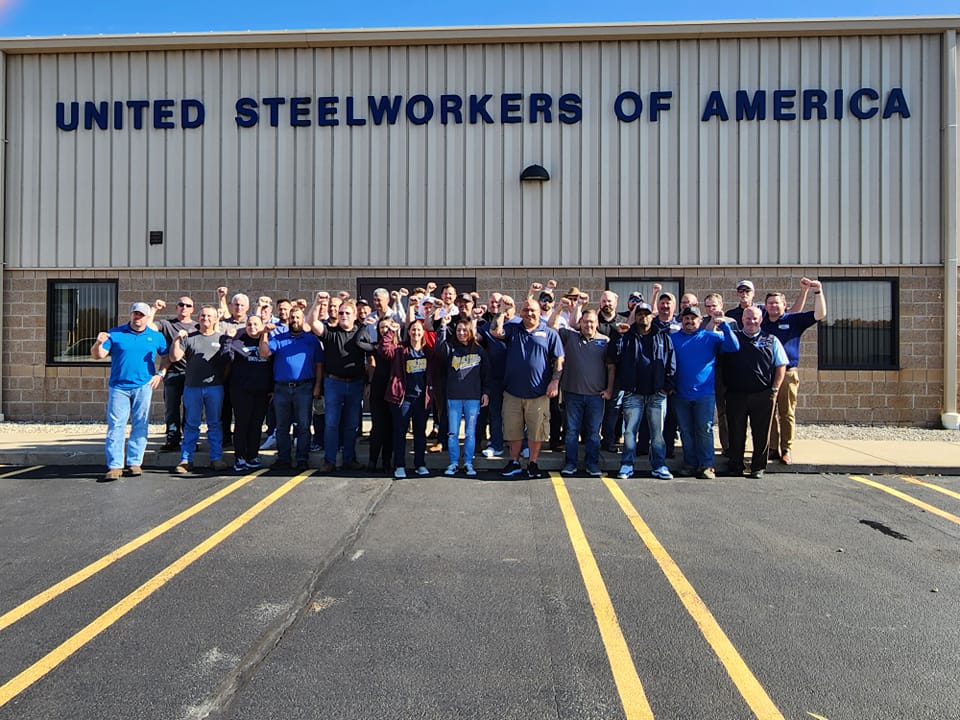Dow DuPont Council members unite in Michigan for annual conference
USW members of the Dow DuPont North American Labor Council met for their annual conference in Midland, Mich., the week of Oct. 24 to discuss common challenges in the vast chemical sector, celebrate victories, and learn from each other.
They were also joined by chemical workers in other unions, including the International Union of Operating Engineers and IndustriALL Global Union.

Kent Holsing, chairperson of the council and president of Local 12075, kicked off the conference, and Mike Orvosh, who serves as president of Local 12934, welcomed members to his hometown.
He also thanked the council members for their support during his local’s first negotiations with Dow in 2019.
“We’re all in this together,” Orvosh said. “You all really stepped up to help us, and it’s why I love this council. The greatest value is the one-on-one connections.”
Global connections
The first day of the conference had a global focus and included international guests such as Tom Grinter, IndustriALL Director of Chemicals and Pharmaceuticals, Pulp and Paper, Rubber Industries.
Several members of the United Petrochemical Laborers and Employees Union (SOEPU) in Argentina also addressed the council and spoke about their experiences as employees of Corteva and Dow.
SOEPU General Secretary Mauricio Brizuela stressed the importance of workers staying connected as chemical manufacturers continue to expand across the globe.
“Communication is very important, especially when you’re dealing with an international issue,” said Brizuela, who informed the council on Dow’s recent attempt to shut down a major facility in San Lorenzo that employs 120 workers. “When one suffers, we all suffer.”
Brizuela and the rest of the workers from Argentina received a standing ovation from the council when they detailed how they organized a massive campaign to keep the plant open.
“Corporations act globally, so we need to act globally,” Holsing reminded the council after the Argentine delegation spoke. “We have to know what’s going on elsewhere, because it will affect us eventually. We can’t be narrow-sighted.”
Promoting safety
Members spent the rest of the week giving local union reports and brainstorming with each other on how to solve common challenges, like worker fatigue. Steve Sallman, Director of the USW Health, Safety and Environment Department, joined the conference on Wed., Oct. 26, to lead a discussion on this widespread yet preventable workplace problem.
Holsing also addressed the council on this issue that he says more people need to take seriously.
“I’d rather have people working less overtime than more overtime,” said Holsing. “We can’t have people working themselves to death.”
Many of the locals who attended the conference shared that they’re experiencing high rates of worker fatigue and more safety incidents as a result of short staffing alongside increased production. Grinter from IndustriALL said this is a problem that is increasing across global industries as companies prioritize profits over people.
Contract support
Since the members met last October in San Antonio, ten local unions have bargained contracts with the five major employers who make up the council: Dow, DuPont, Corteva, Trinseo, and International Flavors and Fragrances (IFF). The large, diverse sector does not utilize a pattern agreement, so the USW bargains each contract separately.
The Dow DuPont Council alone includes 2,371 members across 11 states in 11 cities, which is one reason these meetings are so vital in keeping the thousands of chemical workers linked in to each other’s struggles and accomplishments.
Duane Switala, unit president of Local 12075-36 at IFF said on the last day of the meeting that these gatherings are invaluable. The group’s last conference in October prepared Switala and the rest of his team for their first negotiations since DuPont merged with IFF in 2021.
“Without this conference, I would have had a much harder time getting through our contract,” Switala said. “This is my fourth time here and it’s helped me a lot in gaining the knowledge I need.”
The USW represents the most workers in the North American chemical industry, with approximately 30,000 chemical members.
By clicking Sign Up you're confirming that you agree with our Terms and Conditions.
Recent News Articles
Want to Learn More?
See how the USW is making a real difference in our communities and our workplaces.